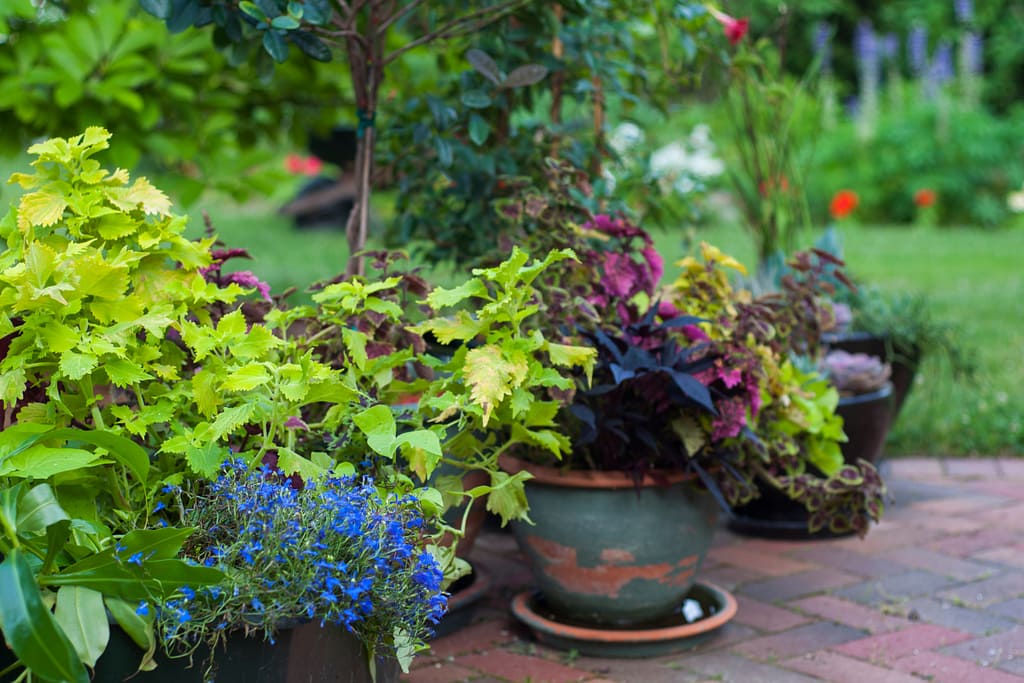
Houseplant parenthood has been a trend accelerated by the novel coronavirus pandemic, but to quote Ned Stark from “Game of Thrones”: “Winter is Coming.”
Even in Southern California, where “winter” is a relative term, plant experts say there are a list of considerations to think about in a time period when there’s less light, drier air and chillier temperatures to contend with, even with indoor plants.
Here are their tips for what to do with your plants when the days are short:
1. Know when to move plants

Danae Horst, owner of Folia Collective in Eagle Rock and author of the book “Houseplants for All: How to Fill Any Home with Happy Plants,” said that lots of houseplants such as monsteras, cactus and succulents require a lot of bright filtered light in order to thrive and as winter time approaches the shorter days mean that there’s less of that bright light indoors.
For a lot of houseplants that means that their growth might slow down and they might even lose some of their leaves because they’re not getting enough light to feed themselves through photosynthesis. Cactuses may take on unusual growth pattern where they stretch themselves out looking for light and might even get to a point where they can’t support themselves.
Horst said that sometimes determining where the best source of light in your home is and moving the plants there, is a good solution.
“For instance, if you have one south or southwestern facing window, that’s going to be a good place for plants no matter what time of year and you may end up needing to put a bunch more of your northern or eastern facing plants in a different window just for the few months where the days are much shorter,” she said.
While some houseplants are more finicky and may need to be moved, others are a little more carefree, Horst said, including the low-light tolerant sansevierias (snake plants) and Zamioculcas zamiifolias(ZZ plants).
Spider plants, pothos and Chinese evergreen are other plants that are hardy in the darker conditions, according to Nehemias de Leon-Martin, a manager at Planta Nursery in Highland Park.
2. Be prepared to water less

Mackenna Rowley, owner of Riverside plant store Piep, said that how much water plants use is based on the amount of light that they are receiving. Less light means less water is needed.
Rowley said that a common issue she sees with her customers is that they might be watering their houseplants on a schedule and the plant will do well for a while and then suddenly in the fall — when light hours are decreasing — its leaves start turning yellow.
“It’s because they’re giving it more water than it needs for the amount of light that it’s getting,” she said.
Rowley said it’s generally a better idea to not water on set schedule but rather to keep tabs on how dry the plant’s soil is and water according to that.
3. Maintain humidity

Colder air is generally drier and that could have an impact on plants, but so can turning on your gas or electric heater — that can really dry out the air, too, according to Horst.
Rowley recommends seeing where your plants are in relation to heat sources.
“As you start turning on your heat, do a quick check throughout your whole house, then notice where the vents are and make sure the plants aren’t directly under them or within two or three feet.” Rowley said.
For plants that need elevated humidity even during the non-winter months — such as calatheas, ferns and marantas — humidity is going to be particularly important. Horst recommends using a humidifier to keep the air less dry but does not recommend other methods such as misting the plants. She says the amount of humidity that adds is fairly limited and the lingering moisture on leaves can lead to things like fungal infections and leaf spot disorders.
de Leon-Martin said one of his tricks is to group plants together and in doing so that locks the humidity into one place as the plants share humid air among themselves.
“If you group them, they kind of help each other,” he said.
4. Know when to bring plants indoors

Whether you bring plants inside or not generally depends on the type of plant and how established it is.
Rowley said there are some plants that can live outdoors in Southern California all year long, especially once they’ve become big and established. These include plants such as birds of paradise and succulents.
“But generally under about 40 degrees and they’re not going to love it,” she said. “It’s only if you have a large, hearty plant, that they’re going to be able to thrive.”
Gary Jones, Armstrong Garden Centers’ chief horticulturist & training manager, said that smaller tropical plants should be brought inside if there’s the potential for frost.
If a plant is too big to bring in, “just simply covering tropical plants or a house plant with any kind of a lightweight cloth makes a huge difference,” he said.
But there are some things to think about before bringing plants indoors.
Horst said that there’s always the possibility that the plants might have picked up some pests from being outside, such as spider mites, mealybugs and thrips. She said it’s important to examine plants to see if they have these bugs and appropriately quarantine them so the bugs don’t spread to other plants.
It’s also important to make sure that you’re giving the plants as much light as possible since they were likely receiving a lot of light, Horst said.
5. What to do if your patio plants get damage

If your patio plants receive frost damage on their leaves, your first instinct may be to cut the plant way back, but Jones says it’s better to wait.
“Most people cut off good growth,” he said. “It looks bad but it actually is just fine, so they’re cutting back way more than they need to. The plant will recover.”
Jones said to wait a couple weeks until you see new growth and then you can cut the plant to that point.
Courtesy of The OCR


